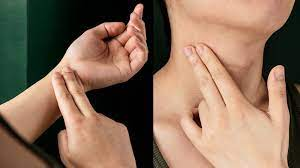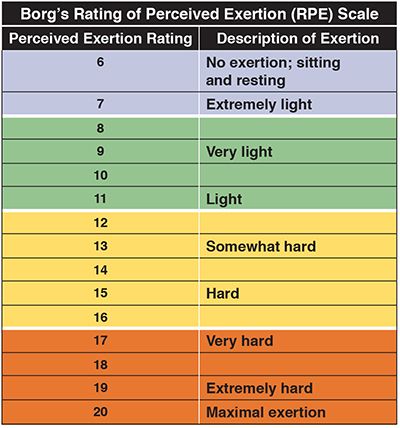Returning to surfing after illness. 2 simple tools a surfer can use to check in with their well-being
Feb 11, 2022
Returning to surfing after a significant illness can be frustrating. You begin to feel well, so you paddle out, only to be completely wiped before your first duck dive. Sadly, you return to the beach before you try again the next day, and the next. It can become a period of time - on repeat - where you overdo it in the surf and then need to recover in bed. The problem with pushing yourself too much is exacerbating the risk of severe fatigue and injury. Thankfully there are simple, quick and low-tech ways to monitor your recovery from illness and navigate your return to shredding in the surf.
Exercise is a stressor on the body. Our bodies respond to stress, which is how we can create positive gains through exercise. Examples include improved strength, fitness, coordination, balance and power. Each of these ‘performance variables’ have specific exercise strategies that can be implemented to create that specific adaptation. How cool is that! On the flip side, incorrect exercise prescription, at inappropriate times, can cause negative effects and delayed recovery. Negative effects include ongoing muscle soreness, joint soreness, increased inflammation, reduced cognitive function, injury, hormonal disturbances and chronic health issues. So essentially, exercise can be really good for us or potentially harmful. That’s why it is ESSENTIAL to work with someone who is qualified and knows what they are doing!
Another point to consider is that we only have finite resources available to us at any point in time. These resources include energy availability, nervous system attention, oxygen, blood supply, etc. – basically, the tools we need to go about our day and perform as healthy individuals. When we become unwell, the distribution of our resources shifts. This means less resources are available for physical activity. So overdoing it with exercise can be harmful and can delay recovery by pulling resources away from where we need them. Or, by not having the resources available to complete the additional task of exercise. For example, when your nervous system attention and energy availability are taxed, this can mean reduced reaction time and decision making capabilities. An error in split second decision making, in a sport like surfing, can leave you in a dangerous situation where you may be caught in the impact zone or experience an acute injury, like a fin impact. How resources are silently being distributed is unknown to us most of the time. So it is understandable that returning to surfing, whilst recovering from illness, can feel like a guessing game.
There are clues though. And you can use these clues to not only gain insight into your readiness to return to exercise but to monitor your health and well-being in general. As an Exercise Physiologist, I use multiple tools to monitor how surfers adapt to training, recover from illness, manage stress and conditions such as chronic fatigue or post viral fatigue, and to flag for early indications of illness or over-training. Today, I am going to share TWO tools that you can use, at home and in the water, that require nil technology and are simple to use.
TOOL #1: RESTING HEART RATE (HR)
HR gives us an idea of how hard our heart is working. When we are unwell, our HR can become elevated simply because the body is working harder to fight illness. It is best to measure your resting HR upon waking, and before you sit up/stand up out of bed. You want to take your resting HR for 4–5 days in a row to get an idea of any fluctuations and persisting HR elevation. You don’t need a HR monitor (if you want to use a device, a HR monitor with a chest strap is more accurate than a wrist-based device), all you need is a minute of your time, your neck or wrist and your fingertips. Pretty sure you have that covered. Here’s how you do it:
- Measure your pulse at your neck or wrist, using your index and middle finger.
- Count the number of beats in 1 minute. If you can’t stay still for that long, you can count for 30 seconds and multiply that number by 2.

If your resting HR is approximately 10-20 beats above your normal resting HR then there is potentially something going on. For example, if your resting HR is what you normally experience when standing (e.g. 70–90 beats per minute, depending on your size, age, medical history and fitness levels), your heart is already under load and your surf session may be an additional stress that your body is not ready for. Factors such as stress and dehydration can also increase your resting HR; However, I would flag any persisting elevated resting HR with your medical practitioner. Especially if you have a family history of cardiac illness or you are experiencing additional symptoms such as:
- Shortness of breath
- Fainting spells
- Light-headedness or dizziness
- Fluttering or palpitations in the chest
- Chest pain/discomfort
Illness recovery aside, resting HR is a good tool to use to measure your general health, fitness, well-being and approach to aging. So I would keep this in your toolkit and check it on a regular basis.
TOOL #2: RATE OF PERCEIVED EXERTION (RPE)
Rate of Perceived Exertion (RPE) can be monitored using a ‘BORG’ scale. The benefit of using RPE is that it allows you to check in with yourself during activity. You simply ask yourself “how hard do I feel like I’m working right now?” and give yourself a numerical score, as per the BORG scale attached.
If surfing your favourite surf break in 2–3 foot surf is usually a “light to moderate” level of effort for you, but you are gassing out at 15 (“extremely hard”) on the BORG scale, then you know something is up. It is costing you more to do that same level of activity. Which means, you may not have the resources you need for the additional demands of surfing.
Whilst exercising can be good for immune health, exercise that is too high intensity or too long in duration can increase inflammation upon completion. So, you can use the BORG scale to aim for an 11–13, a “fairly light to somewhat hard” level of effort, and then gradually increase the duration of your surf.

Gunner Borg, 1982.
Knowing how to clue into your body and listen to the silent indicators of good health can help you return to surfing much quicker. Plus, you reduce the risk of crashing and burning and prolonging your symptoms. There are many, many more tools and resources available around surf conditioning, but these two are simple tools you can use yourself, straight away.
As Exercise Physiologists, exercise prescription that considers your biology, is exactly what we specialise in. If you need support to surf your best waves possible in this lifetime, reach out to us today. We can design your very own surf conditioning program that considers your unique biology, health or injury concerns and importantly your surfing goals. For the month of March in 2022, we will be offering 15% of initial assessments for individuals that want tailored surf conditioning programs. Simply use the code HRBORG15 when you purchase your consultation online TODAY
Book your initial consultation today
...
..
No content on this site, regardless of date, should ever be used as a substitute for direct medical advice from your doctor or qualified physician.
Stay connected with news and updates!
Join our mailing list to receive the latest news and updates from our team.
Don't worry, your information will not be shared.
We hate SPAM. We will never sell your information, for any reason.


